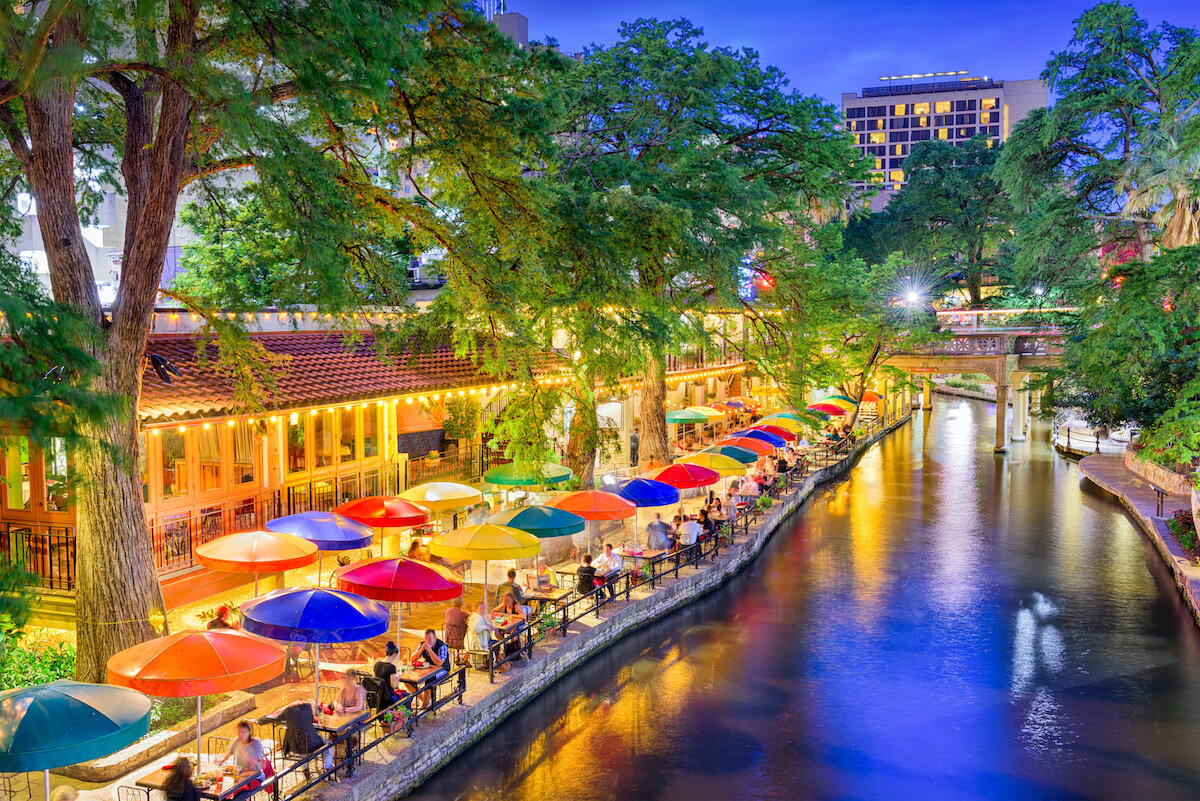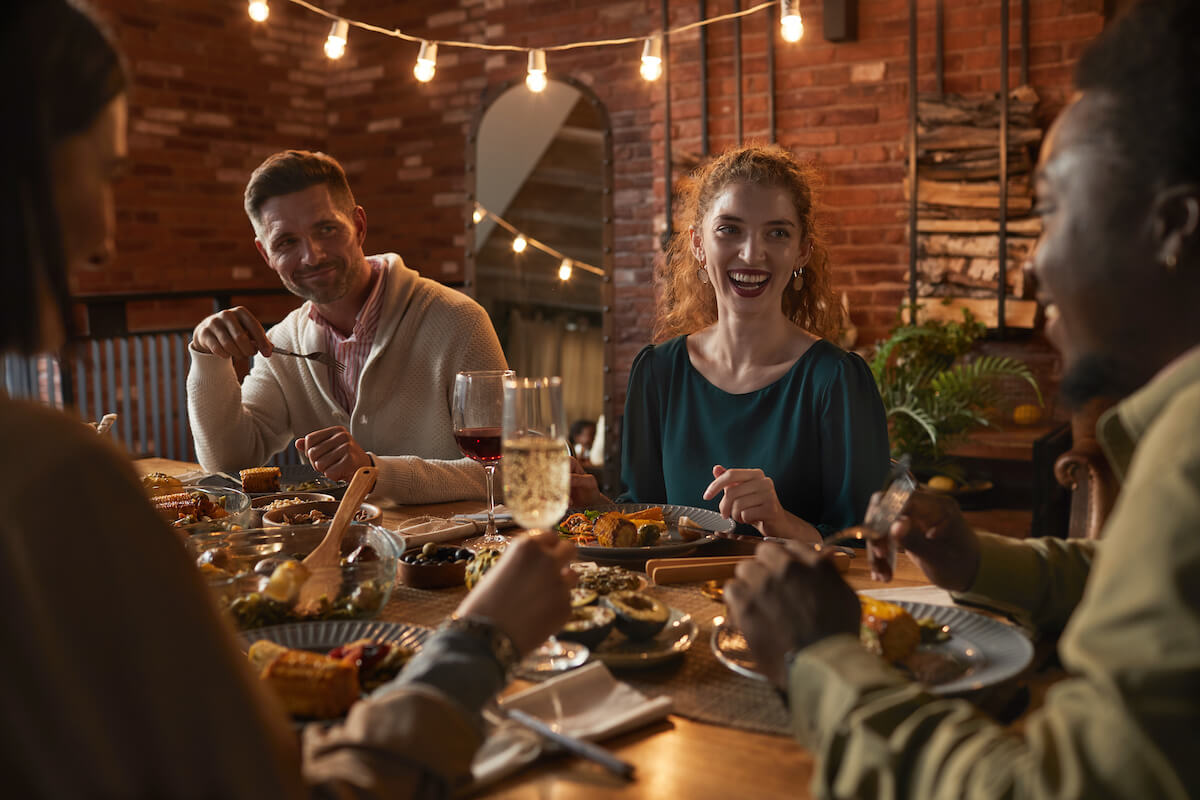Four key elements of great restaurant interior design
Skip the article and turn takeaways into action by scheduling a call with our team.
Whether consciously or unconsciously, a restaurant’s interior design profoundly affects the dining experience. The restaurant decor, dining room layout, types of seating, theme, noise levels, and more all combine to create the restaurant’s ambiance. Many of the best restaurants focus heavily on their interior design since a well-designed restaurant can elevate an ordinary eatery into something extraordinary.
Restauranteurs with big budgets can hire design studios. But that can be expensive and not necessary for many other establishments. For independent, small, or otherwise budget-constrained restaurants, plenty of DIY interior design projects can spruce up the location and give restaurant owners and customers alike something to appreciate.
Making a lasting first impression with tasteful and interesting restaurant interior design boosts the customer experience. Done well, and you create an Instagrammable setting that can give you a leg up in social media marketing.
If you’re starting a new restaurant, you’ve got a blank canvas to work with. If you have an established restaurant, there are many ways to get a fresh look. Whatever your goal is, whether you’re looking for decor ideas for your dining room, reconsidering your interior architecture, or revamping your floor plan, we’ve outlined four key elements to guide your project.
1. Define theme and location

Your restaurant decor needs to match your restaurant concept and the specific location you’re in. The interior of a minimalist bistro in New York City will look very different from a fine-dining restaurant in Arizona with Southwestern design elements.
So, when you’re considering what you want your restaurant’s interior design to look like, here are some questions you can ask to help refine ideas:
- What is unique about the location you’re in? What are common design themes?
- What is specific to your restaurant concept? What sets you apart from the competition, and how can design build your restaurant brand?
- What would an elevator pitch sound like for your restaurant’s interior design?
- How can you ensure your decor demonstrates you’re a modern restaurant and not dated?
Understanding the influence of your location and what other local restaurants are doing is a crucial step in market research to determine what works in design.
There‘s nothing wrong with borrowing smart ideas while seeing where competitors fall short. Consider an example: Are your competitors‘ seats comfortable? Are they also original and interesting-looking or uninspiring and bland? What can you do to separate yourself and improve upon the ideas of your competitors?
Applying this critical lens to all aspects of the restaurant layout will help you develop a measuring stick to compare your restaurant. Seemingly original ideas always have an influence somewhere.
Work with local artists
One excellent way to match your design to its location is to work with local artists. Whether you showcase their work or hire them for consulting or to help paint murals, tapping into the local visual talent pool can give you some verifiable cool points in addition to enhancing your restaurant’s ambiance.
2. Consider the effects of sound

Different restaurant concepts require different varieties of light and sound. Consequently, these design elements should be a priority rather than an afterthought.
Noise is a frequent customer complaint at restaurants. Managing acoustics and ambient noise in the dining area can turn a potential liability into a benefit if you can keep the noise level comfortable for diners. In recent years, restaurants have become considerably noisier—often above 80 decibels, compared to an average conversation level of 60 decibels. Anything above 85 decibels damages hearing over the long term.
Diners want to be able to talk with their companions at their table, so they’ll appreciate that they don’t have to shout at your thoughtfully designed restaurant. That doesn’t mean there shouldn’t be background sound—a quiet restaurant can be just as jarring as an overly noisy one.
A good ambient noise level is somewhere around 65-70 decibels. Customers can still have conversations without raising their voices, while the setting still feels lively. Interestingly, people struggle to remember details of conversations at noise levels over 65 decibels, so consider aiming lower if you have customers on business or dates.
One reason noise levels have risen in restaurants is the clean lines and hard surfaces popular with minimalist-style decor. Concrete and metal reflect noise rather than absorb it, making clattering silverware, and other standard restaurant sounds all the more noticeable.
To combat this potential problem, measure noise levels in your restaurant with a decibel meter. If your noise levels are higher than you’d like, consider adding some acoustic-friendly decor like curtains, softer seats, noise-absorbing material like that used in recording studios, or rugs. Alternatively, you can plan a section of your restaurant to be quieter than others, like an area with banquettes for customers looking for an intimate setting.
3. Get your lighting right

Like sound, lighting can have a significant effect on the dining experience. If you work in an office with fluorescent light, you know the draining impact it can have on morale. This isn’t just your imagination—a recent study showed that fluorescent light can intensify anxiety disorders and remind people of old places and negative feelings.
So, while fluorescent lighting may be cheaper, warm, incandescent bulbs or other lighting that mimics natural light are more comfortable for customers. If you’re curious how much light is right, lighting industry experts suggest around 150 lux in a restaurant dining room. Recessed lighting, light diffusers, and tasteful pendants and chandeliers can help maintain a uniform and comfortable level of lighting throughout the restaurant.
If you run a fine-dining restaurant, you may want to go a bit lower and add some candles for intimacy. Alternatively, if your restaurant is fast-casual, you may want to go a bit higher to keep customers energized and increase your seat turnover.
Lighting is also a crucial element of bar design and branding. Turning on the lights at the end of the night is a surefire way to get customers to leave since low-light scenarios make people feel more at ease when having a drink with friends.
4. Use some greenery

Plants are a classic way to add some life (literally) to a restaurant’s design and prevent a cold, industrial feel that can put customers off. Greenery can make an outdoor dining area feel as lush and natural as possible and can be very attractive and comforting.
Again, that’s not just guesswork. Plants have been shown to reduce stress, improve mental health and creativity, and even make people feel more clever.
Using native plants to decorate your restaurant can tailor the establishment to its location. Palm trees make plenty of sense in Miami or Los Angeles but are out of place in NYC.
One of the best parts of plants as a restaurant interior design idea is that they’re easy on the budget. Furthermore, they can fit any restaurant layout, fill up blank spaces, and even clean the air. Regular watering and occasional fertilizing will keep them happy and won’t take much effort from your staff.
Bringing restaurant interior design ideas together
Intelligent restaurant interior design can elevate a restaurant to someplace special for a customer. A clear, consistent theme that fits the location makes an establishment feel like an extension of the environment. Using sound and light thoughtfully so customers feel comfortable encourages them to return. And adding plants is a simple way to cultivate a healthy and happy ambiance.
If your restaurant is well-designed, you’ll want to make sure you have well-designed software to complement it. That’s where Yelp Guest Manager comes in. With robust options like convenient reservations, waitlists and check-ins, point of sale syncing, and third-party integrations for deliveries, Guest Manager is a seamless FOH management system.
Want to see how it works and if it’s right for you? Reach out to us for a free demo and we’ll be happy to show you around. We’re pretty keen on things designed well, too.